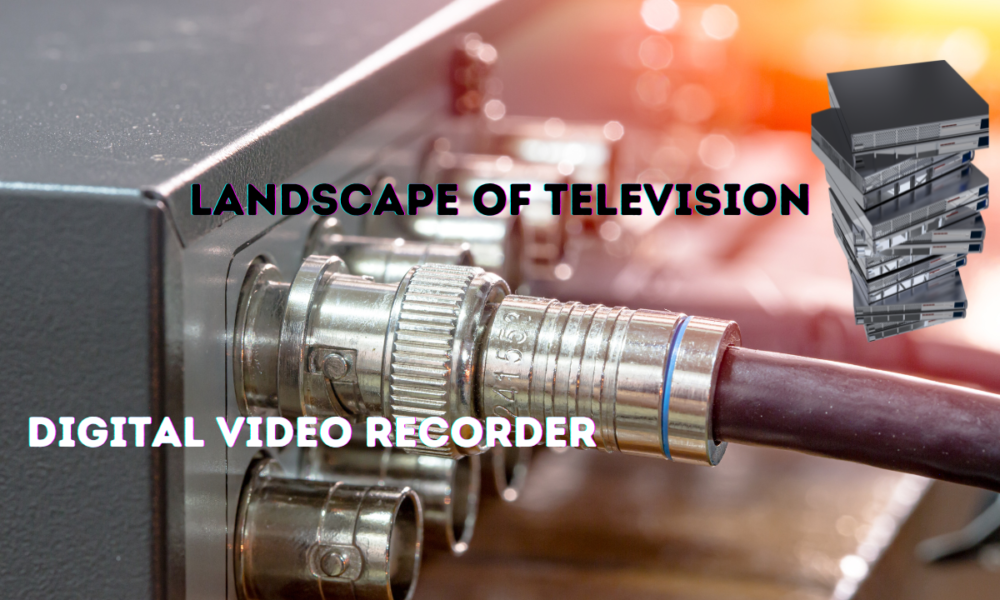The Evolution and Impact of Digital Video Recorder (DVRs)
Digital Video Recorder: The landscape of television and media consumption has been dramatically transformed by the advent of digital video recorders (DVRs). Originally introduced in the late 1990s, DVRs have become an integral component of the modern viewer’s experience, offering unprecedented control and flexibility over what, when, and how they watch their favorite programs. The evolution of DVR technology, its impact on the television industry, and its role in the ongoing shift towards on-demand viewing.
The Rise of Digital Video Recorder Technology
Digital video recorders revolutionized the way audiences engage with television by allowing users to record, pause, and rewind live TV without the need for videotapes or DVDs. The technology was pioneered by companies like TiVo and ReplayTV, which launched their first units in 1999. These devices not only enabled viewers to record shows based on a schedule but also introduced features like season passes, which automatically recorded every new episode of a series.
Impact on Television Viewing Habits
One of the most profound impacts of Digital Video Recorders is how they changed viewer habits. The ability to skip commercials and watch shows at one’s convenience meant that people no longer had to plan their lives around television schedules. This shift led to what is known as time-shifting, where viewers watch recorded shows long after they have aired, altering the traditional metrics used by advertisers and networks to gauge a show’s success.
DVRs and the Advertising Industry
The introduction of DVRs posed a significant challenge for the advertising industry, as the technology’s ad-skipping feature threatened traditional commercial viewership. This led to the development of new advertising strategies, such as placing products within the content of the shows themselves and creating more engaging, less intrusive ad formats that are harder to skip.
Hard-disk-based digital video recorders
Hard-disk-based digital video recorders (DVRs) have been a pivotal technology in the evolution of home entertainment, offering users the ability to record, store, and playback television shows directly on a hard disk drive. These devices marked a significant advancement from older recording technologies, such as VCRs, which used magnetic tapes. The shift to hard-disk storage brought about substantial improvements in both the quality and functionality of home recording devices.
Types of Digital Video Recorders
Digital Video Recorders (DVRs) come in various types, each catering to different needs and setups in the realm of media consumption. Here’s an overview of the primary types of DVRs available in the market:
Set-Top Box DVRs
These are perhaps the most well-known types of DVRs. They are provided by cable and satellite TV companies and are integrated with the service’s receiver box. Brands like TiVo, DirecTV, and Dish Network offer these devices, which not only record and store TV programs but also come with user-friendly interfaces and features like remote recording via smartphone apps.
Television Integrated DVRs
Some televisions come with built-in DVR capabilities, eliminating the need for a separate recording device. These TVs have internal hard drives and can record live television based on user settings. However, they may offer less flexibility compared to set-top box DVRs in terms of storage capacity and feature sets.
Network-Attached DVRs (NVRs)
Network-Attached DVRs are typically used in the context of security systems rather than for recording television broadcasts. These systems record video feeds from networked security cameras onto a dedicated storage device that can be accessed across a network. This setup is ideal for surveillance applications where remote monitoring and recording are required.
Portable DVRs
Portable DVRs are compact devices designed for mobile setups, often used by journalists or researchers. They can be connected to cameras or even microphones to record video and audio data directly onto an internal hard drive or external storage media.
PC-Based DVRs
These DVRs utilize computer hardware and software to record video from digital sources. By installing a video capture card and DVR software on a computer, users can turn their PC into a DVR system. This setup is highly customizable, allowing users to choose their storage capacity, recording quality, and additional features based on the software capabilities.
Cloud-Based DVRs
An increasingly popular type, cloud-based DVRs do not require physical storage devices at the user’s location. Instead, they store recorded content on remote servers, which users can access via the internet. Many streaming services, like YouTube TV and Hulu Live, offer cloud DVR features, allowing users to record shows and watch them on-demand from any device.
Hybrid DVRs
Hybrid DVRs combine features of more than one type of DVR. For example, some set-top box DVRs also offer cloud storage features, providing both local and remote access to recorded content. This type of DVR is useful for users who need both reliability and accessibility in their recording solutions.
Each type of DVR has its strengths and specific use cases, making them suitable for different audiences, from casual television viewers to professional security managers. The choice of DVR often depends on the user’s specific needs, such as ease of use, storage capacity, quality of recording, and accessibility of the recorded content.
Contribution to On-Demand and Streaming Services
The popularity of DVRs paved the way for the rise of on-demand viewing and streaming services like Netflix, Hulu, and Amazon Prime. These platforms took the principles of DVR—watching what you want when you want—further by offering vast libraries of content available to stream at any time, thereby reducing the need for recording and storage of programs.
The Future of DVRs
As streaming services continue to dominate, the relevance of traditional DVRs is waning. However, many cable providers and tech companies are integrating DVR-like features into their streaming services, such as cloud DVR functions, which allow users to save their favorite shows directly to the cloud. This adaptation signifies the enduring legacy of DVR technology in the streaming era.
Conclusion: Digital video recorder
Digital video recorders have not only reshaped viewer habits but have also had a lasting impact on the television and advertising industries. As the media landscape continues to evolve, the principles introduced by DVRs—consumer control and convenience—remain at the forefront of technological advancements in media consumption. Despite the rise of streaming, the legacy of DVR technology continues to influence how media is consumed and distributed, ensuring that the viewer remains at the center of the viewing experience.











